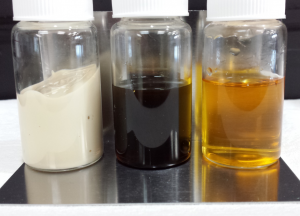Unfortunately, stamping lubricants are often lumped into the same generic category when developing surface pretreatment processes. It’s very important to distinguish the differences in types of stamping fluids as they behave very differently in pre-wash and cleaning stages and can have very different effects regarding carry-over and bath-loading are concerned. For this reason, it is extremely important that the stamping lubricant not be generically as “oil”, but by the more precise type of chemistry it is.

One class of stamping lubricant may contribute to more foam in a cleaning bath, whereas another stamping lubricant may emulsify more oil. Other lubricants may tie up may react with cleaner components to form sludge and scale, whereas another lubricant may be selectively split from cleaning solution and lead to redeposition issues.
For these reasons, it is highly recommended that a manufacturer identify the types of stamping lubricants and mill oils entering their facility and process to mitigate potential issues downstream. Whether the parts are stamped in the same facility they are being finished in or are coming from 1st, 2nd or 3rd tier suppliers in the “raw” state—looking at the “bigger picture” can virtually eliminate many cleaning defects and extend cleaner and treatment baths.
IRMCO works closely with customers to identify areas for potential impact and improvement and develops products that are very compliant with conventional iron and zinc phosphates, TMC conversion coatings and porcelain enameling processes.


